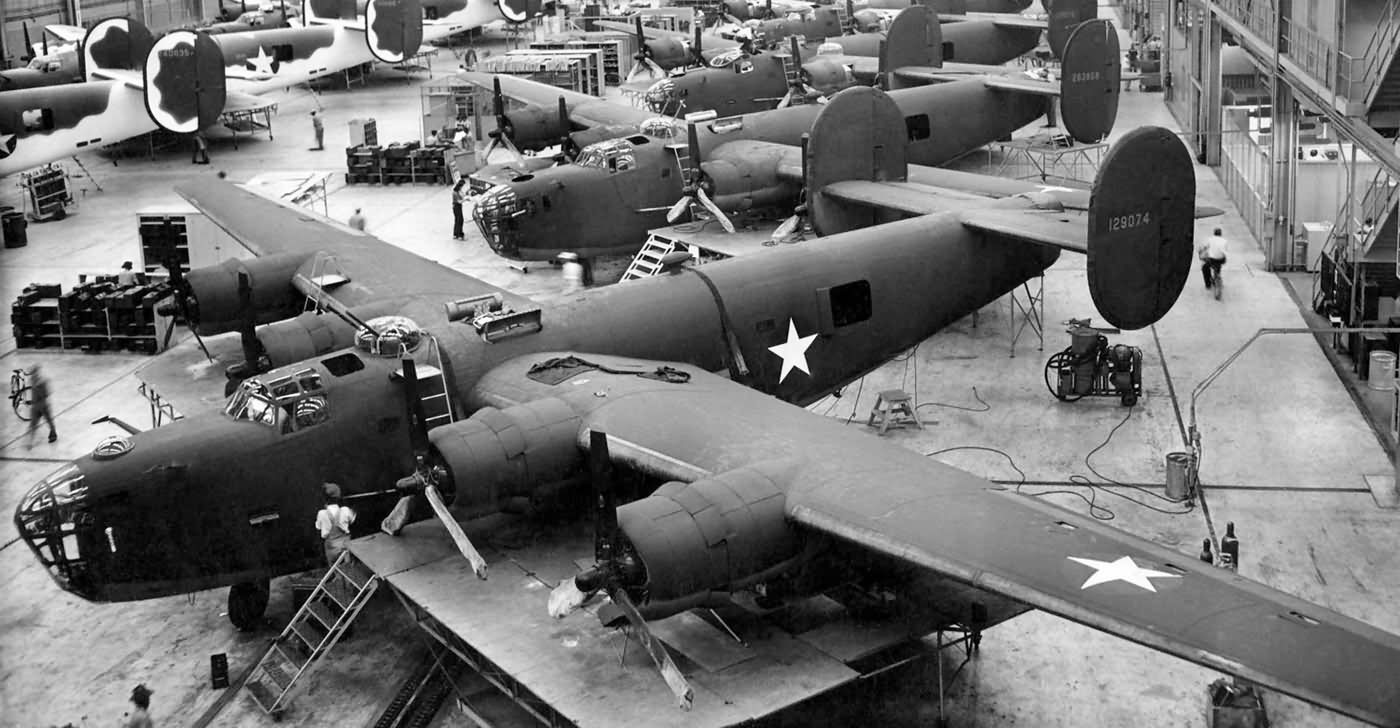Details of the B-24 Assembly Line
- The B-24 Liberator was assembled using an innovative approach described by Reuben Fleet, president of Consolidated Aircraft, as a straight line being the shortest distance between finished bombers. Raw materials would be brought in at one end of the mile-long plant, and sub-assemblies would emerge from the other end. These sub-assemblies would then be brought to the final assembly line.
- The final assembly line at Consolidated was mechanized for mass production. At the end of the mechanized assembly line, the B-24s would undergo final installation of internal fittings, engine and propeller adjustments and testing. After that, they would be ready for flight testing and delivery to the Army Ferry Command.
- The fuselage of the B-24 was a semi-monocoque shell, meaning it used a stressed skin construction with a minimum of internal bracing. The skin was made of Alclad, an aluminum alloy coated with pure aluminum for corrosion resistance, and was reinforced with Z-shaped stringers and transverse bulkheads and belt frames. The stringers were spaced six inches apart with greater concentrations where needed for strength. Longerons were used around openings for the bomb bay and access doors where the skin-stringer combination was interrupted.
- The wing design was based on that of the Consolidated Model 31 flying boat and was selected for ease of production. The wing used a geometrically similar airfoil, which means that the shape of the airfoil remained the same at different points along the wing, but its size changed. The wing envelope was defined by connecting points on the root and tip sections that represented the same percentage of the chord length at each point. The tip was then faired from the construction envelope.
- Henry Ford, the head of Ford Motor Company, envisioned applying mass production techniques to the construction of the B-24. Ford personnel visited Consolidated’s San Diego factory, and a plan was developed for Ford to produce B-24s at a new plant in Willow Run, Michigan. Ford’s approach involved breaking the B-24 down into 20,000 individual operations, similar to how they would analyze car assembly.
- The Willow Run plant was a massive facility, a quarter of a mile long with 70 assembly lines. Ford’s goal was to produce one B-24 per hour. To achieve this, Ford utilized innovative production methods. Instead of cutting out parts from metal sheets with saws and routers, Ford used blanking dies to punch out parts. Rivet holes were pierced during the blanking operation rather than drilled later. One stroke of a 500-ton press could punch 2,000 rivet holes in a sheet of metal. Spot-welding was used instead of riveting where possible, saving weight, time, and labor.
